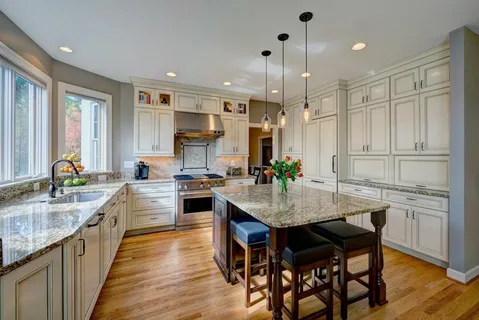Remodeling your kitchen is a significant project that can transform one of the most important spaces in your home. Whether you’re looking to enhance functionality, update the style, or increase your home’s value, a well-planned kitchen remodel can achieve all these goals. This guide will take you through every step of the process, ensuring your kitchen remodel is a success.
- Planning and Budgeting
The first step in any remodeling project is planning and setting a budget. Start by identifying your needs and wants. Do you need more storage space? Are you looking to modernize the kitchen’s appearance? Once you have a clear vision, set a realistic budget. Remember to account for unexpected costs, which often arise during remodeling projects. A good rule of thumb is to allocate 10-20% of your budget for these surprises.
- Designing Your Dream Kitchen
With a budget in place, it’s time to design your kitchen. Consider the layout—whether you prefer an open concept, a galley kitchen, or an L-shaped design. Think about the workflow, ensuring that the sink, stove, and refrigerator form a convenient “work triangle.” Choose materials that fit your style and budget, from countertops and cabinetry to flooring and lighting. Don’t forget about the smaller details, such as hardware, backsplashes, and appliances, which can significantly impact the overall look and feel of your kitchen.
- Hiring Professionals
Unless you’re an experienced DIYer, you’ll likely need to hire professionals for various aspects of the remodel. This might include a contractor, electrician, plumber, or designer. When choosing a contractor, do your research: check references, read reviews, and verify credentials. A good contractor will communicate clearly, provide a detailed contract, and manage the project efficiently. For specialized tasks like plumbing and electrical work, make sure you hire licensed professionals to ensure the job is done safely and up to code.
- Obtaining Permits
Before any construction begins, make sure you have the necessary permits. Building codes vary by location, so check with your local municipality to find out what’s required. Failing to obtain the proper permits can lead to costly fines and delays. Your contractor should assist you with this process, but it’s ultimately your responsibility to ensure that all legal requirements are met.
- Demolition and Prep Work
Once everything is in place, it’s time for demolition. This step can be messy, but it’s essential for a successful remodel. If you’re removing walls, make sure they aren’t load-bearing unless you plan to replace them with a structural support system. Protect other areas of your home from dust and debris, and consider setting up a temporary kitchen to use during the renovation.
- Installation of New Elements
With the old kitchen removed, you can begin installing the new elements. Start with plumbing and electrical work, followed by walls, flooring, and cabinets. Countertops, appliances, and lighting come next. Throughout the installation, it’s important to monitor the progress and ensure everything is going according to plan. Address any issues promptly to avoid delays.
- Finishing Touches
The final phase of your kitchen remodel involves the finishing touches. This is where your vision truly comes to life. Install the backsplash, hang lighting fixtures, and add decorative elements like curtains, rugs, and artwork. These details can make a significant difference, giving your kitchen a polished and cohesive look.
- Inspection and Final Walkthrough
Before you consider your remodel complete, conduct a thorough inspection. Check that all work is done to your satisfaction and that everything is functioning properly. Walk through the kitchen with your contractor to identify any issues that need to be addressed. This is your chance to make sure your kitchen is perfect before signing off on the project.

